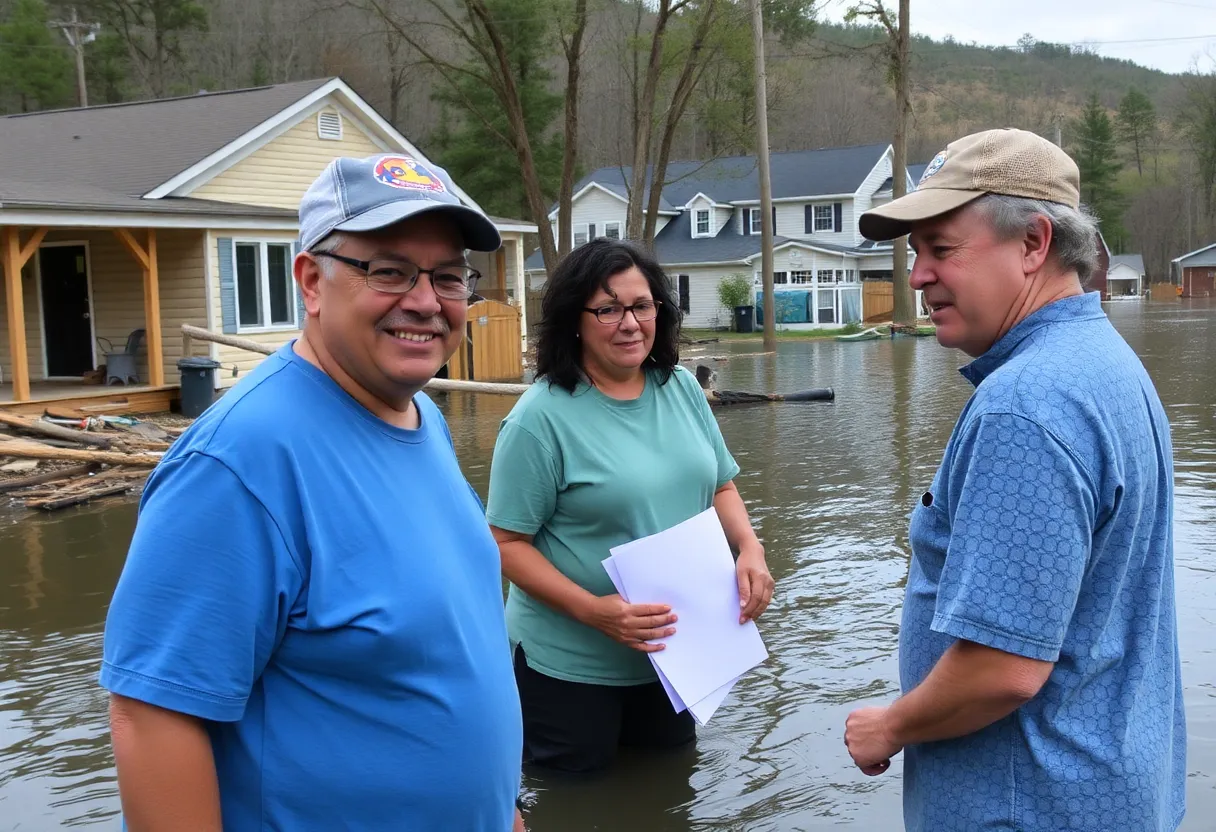News Summary
Asheville, NC, is taking significant steps towards recovery following Hurricane Helene’s devastating impact. Governor Josh Stein has signed five executive orders aimed at providing immediate relief, focusing on housing for over 12,000 displaced individuals and restoring critical infrastructure. Initiatives include the procurement of temporary housing units and the establishment of the Governor’s Recovery Office for Western North Carolina. Despite potential weather complications, the community remains hopeful and united in recovery efforts.
Asheville Takes Steps Toward Recovery After Hurricane Helene
Asheville, North Carolina, is buzzing with optimism today as Governor Josh Stein lays out a comprehensive plan to aid recovery efforts from the recent devastation caused by Hurricane Helene. Just on his first full day in office, Stein convened a press conference surrounded by a diverse group of state leaders from both sides of the aisle, highlighting a commendable show of unity in the face of adversity.
Five Executive Orders for Immediate Relief
During the event, Stein signed five impactful executive orders designed to enhance disaster recovery efforts, focusing on those most affected by the hurricane. It’s estimated that over 12,000 individuals remain displaced from their homes, many currently relying on FEMA-funded hotels, donated campers, or generously staying with friends and family. The urgency is palpable, and Stein’s orders are aimed directly at alleviating these burdens.
Temporary Housing Units
One of the key initiatives under the new orders is increasing the supply of temporary housing. To this end, the North Carolina Department of Public Safety has received authorization to purchase up to 1,000 temporary housing units. Stein’s first executive order streamlines the procurement process, allowing for faster acquisition of these much-needed units. This is crucial as the winter months approach, and providing a safe, warm place for families is a top priority.
Repairing Roads and Bridges
The second executive order addresses the critical issue of infrastructure, mandating the repair or rebuilding of approximately 8,000 damaged private roads and bridges. Recognizing a gap in relief funding, Stein directed the Division of Emergency Management to get the ball rolling on these repairs, ensuring that communities can regain access to essential services and support.
Building a Collaborative Recovery Office
Another significant step outlined by the governor is the establishment of the Governor’s Recovery Office for Western North Carolina (GROW NC). This office will facilitate cross-agency cooperation, which is crucial for effective revitalization efforts. The North Carolina Department of Commerce will be at the helm, working alongside local entities and nonprofits to ensure a coordinated response to the disaster.
Advisory Committee and Community Service
Stein’s fourth executive order sets up a 35-member advisory committee composed of business, civic, and government officials to provide essential guidance throughout the recovery process. Moreover, the fifth order allows state employees to use additional community service leave to volunteer with organizations involved in storm relief. This initiative demonstrates a commitment to community engagement and support.
Long-Term Recovery Plans in Place
While these new directives focus on immediate housing and infrastructure needs, it’s important to note that the existing North Carolina Office of Recovery and Resiliency (NCORR) will continue its recovery efforts in Eastern North Carolina. However, following some criticisms regarding its effectiveness in Western North Carolina, the focus now shifts towards more localized initiatives.
Weather Woes Could Complicate Recovery
Despite these proactive measures, challenges remain. The NOAA’s Storm Prediction Center has raised alarms, upgrading the recovery region to a Level 2 severe weather threat due to anticipated rainfall and storm risks. The forecast is not looking too good, with predictions of 2-5 inches of rain which could further complicate recovery efforts and hinder ongoing work.
With all eyes on Asheville, the local community continues to rally together, supported by organizations such as Samaritan’s Purse that are actively involved in recovery operations. As weather impacts loom on the horizon, the urgency of Stein’s initiatives indicates a robust commitment to ensuring that recovery efforts remain on track amidst the continuing challenges posed by Hurricane Helene.
Deeper Dive: News & Info About This Topic
HERE Resources
Asheville Supports Governor Stein’s Hurricane Recovery Plan
Asheville Struggles with Hurricane Helene Aftermath
Asheville Restaurant Week 2024: A Culinary Adventure
Asheville Braces for Heavy Rainfall Following Hurricane Helene
UNC Asheville Offers Free Tuition for Hurricane Helene Victims
Subway Assault in NYC Raises Safety Concerns
Asheville Artists Showcase Resilience in Atlanta Post-Hurricane Helene
Asheville Community Stunned by Recent Disturbing Cases
Asheville Unites for ‘Fight for the Fallen’ Wrestling Event
Charlotte Delivers Tiny Homes to Flood Victims
Additional Resources
- WBTV News
- Wikipedia: Hurricane Helene
- USA Today
- Google Search: Hurricane Helene
- Journal Sentinel
- Encyclopedia Britannica: Hurricane
- The Hill
- Google News: Hurricane Helene news







